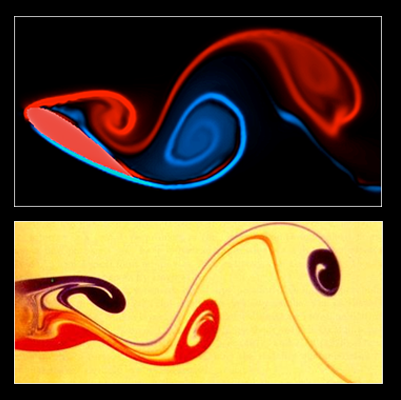Leading Edge Vortex Detection
Using Bio-Inspired On-Body Pressure Sensing
Vortex Shedding on Hydrofoils

During operation at large angles of attack, foils shed vortices from their leading and trailing edges in a similar fashion to the Karman vortex street in the wake of a circular cylinder. Because vortices represent a strong low pressure region, the presence of a shed vortex near the foil surface exerts forces on the body that can be harnessed to enhance foil performance.
Vortex Sensing and Control Applications

Vortex detection and tracking has applications across a wide range of mechanical and biological systems. For flapping foil ocean energy systems, shed vortices could provide enhanced lift and reduce control force. On high speed sailing yachts, the ability to monitor flow separation could improve sail trim and increase performance. In biology, fish harness shed vortices to maintain position behind obstacles and reduce muscle usage.
Vortex Detection Using Pressure Sensing

Experiments using a pressure sensor instrumented hydrofoil have shown that leading edge vortex shedding produces a distinct and repeatable pressure signature. Force measurements also revealed a transient variation in lift force and torque consistent with the presence of a low pressure region near the foil surface. The ability to detect and track shed vortices could allow for active control of devices to ensure beneficial interactions with near-body vorticity.